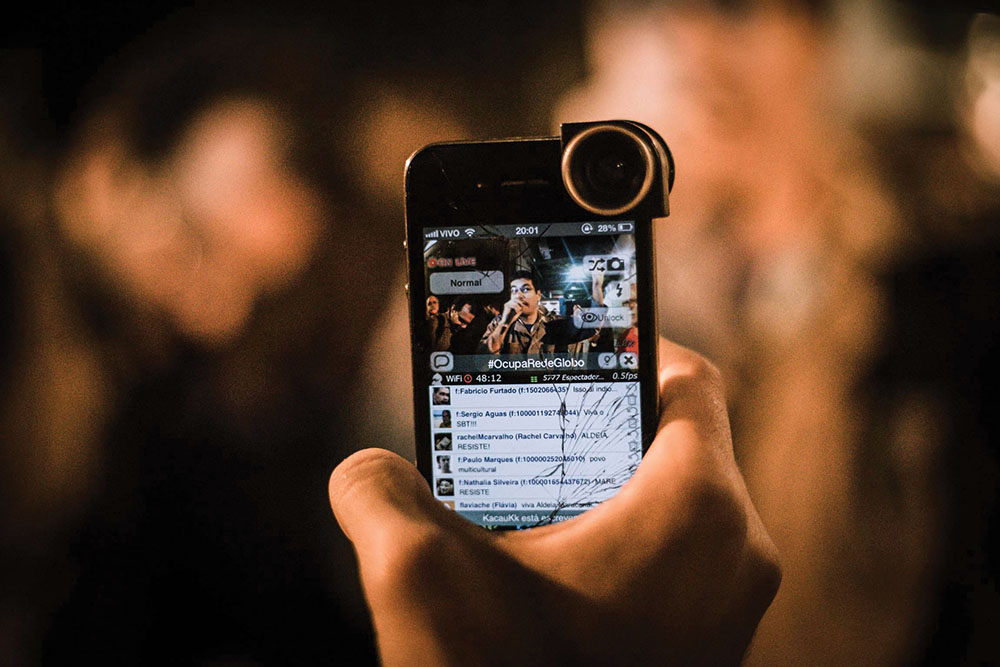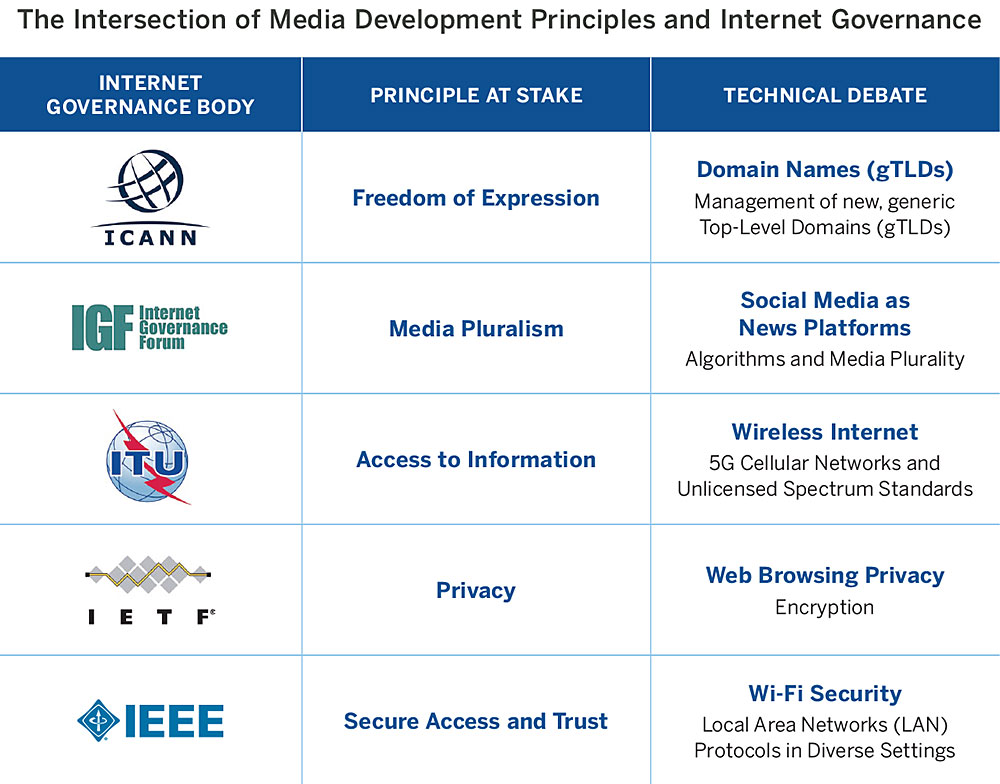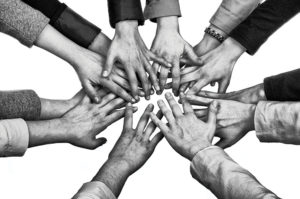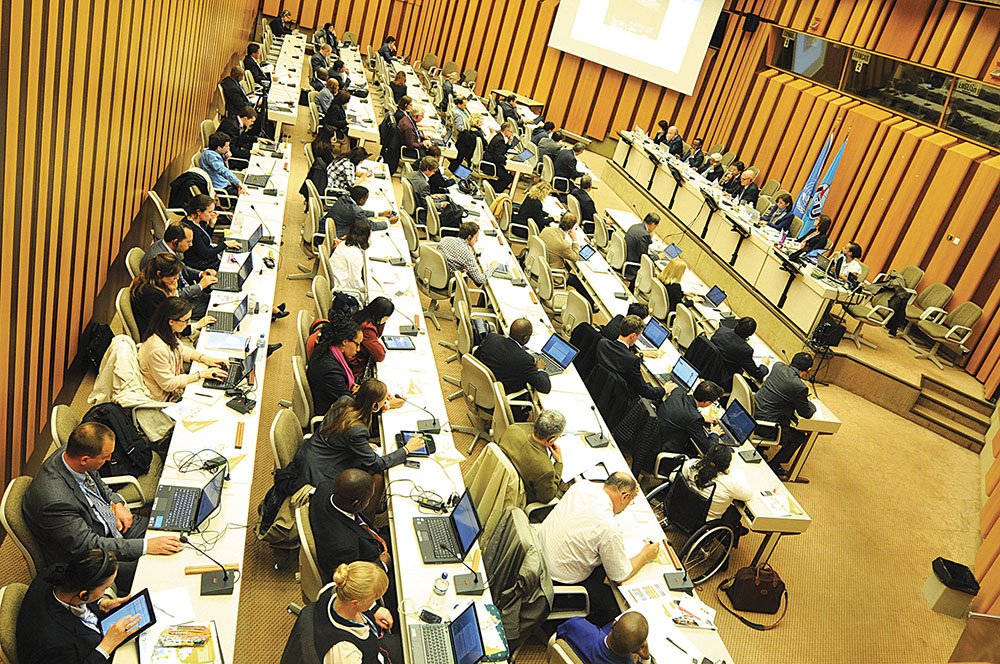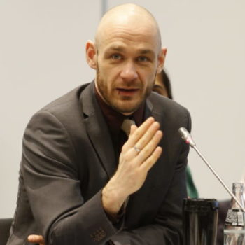Key Findings
The digital convergence means that how the Internet develops going forward — both in terms of policy and technology — will shape the very environment in which all other media operate. This report makes the case to this community that they can, and must, engage in the decision-making bodies that are shaping Internet governance (IG) to ensure that the Internet — and the growing media sphere it sustains — remains open, pluralistic, and democratic.
• The media development community can work to improve the global enabling environment for media by actively engaging in Internet governance.
• Policy issues being discussed at ICANN, IGF, ITU, IETF, and IEEE could greatly benefit from the input of those with media development experience.
• Multistakeholder Internet governance presents a unique opportunity for the media development community to actively shape the future media ecosystem.
Introduction
As early as 1978, Nicholas Negroponte the technologist and founder of MIT’s Media Lab, predicted a future where computing, printing, and broadcasting would converge.1 In the 1990s, as micro-processing power increased exponentially alongside the spread of computer networking, scholars drew attention to an important characteristic of the emergent Internet as a medium; it encompasses all the forms of mass media that preceded it: text, image, audio and video.2 And now, these older forms of communication are increasingly being routed through the digital pathways of the Internet.
This digital convergence means that how the Internet develops going forward — both in terms of policy and technology — will shape the very environment in which all other media operate. The discussions about the nature of the system that will eventually mediate almost all the content we consume, however, have not been well attended by one important group of stakeholders: the community of practitioners concerned with media development. This report seeks to make the case to this community that they can, and must, engage in the decision-making bodies that are shaping Internet governance (IG) to ensure that the Internet — and the growing media sphere it sustains — remains open, pluralistic, and democratic.
The Internet was not designed to be primarily a mechanism for news distribution. However, in many countries Internet platforms are now the primary source of news and information. In places with extremely closed media environments, the Internet is often the only way for individuals to access independent media. Additionally, even for individuals who still depend on television, radio, and newspapers for news, the journalists who supply content for those outlets, in most cases, depend on the Internet to collect background information and to communicate with sources. Thus, the policies that guide the functioning of the Internet will undoubtedly impact both the dissemination of news as well as the reporting capabilities of journalists.
The global nature of the Internet sets it apart from older communications technologies, which are more easily regulated on a national or even local level. The development of transnational social media communities and media distribution platforms run by private companies has further complicated issues of legal jurisdiction and sovereign control. 3 The decentralized nature of the Internet has been beneficial to freedom of the press because it has made it more difficult for governments to censor content. However, decentralization also means that there is a complex web of distributed Internet governance bodies (IGBs) with distinct purviews and different operating procedures that coordinate the various international standards that enable the Internet to operate as a truly global network.
The current multistakeholder Internet governance arrangement is unique in that it allows civil society organizations (CSOs) to directly partake, on relatively equal footing with other stakeholders, in the creation of the policies that govern the Internet. This sets it apart from multilateral governance bodies in which only governments can participate. Thus, rather than merely lobbying state actors to act, CSOs can actively shape the policies themselves. However, few civil society actors participate in the various IGBs where Internet policy gets made. This is especially true for the media development community. This needs to change. Otherwise, private corporations and governments, some of them openly hostile to open news and information environments, will drive the future evolution of the Internet. They will steer it in a direction that suits their commercial and political needs, with limited considerations for public interest concerns like freedom of expression, source protection, and media pluralism.
The Voice of the Media Development Community is Needed
The media development community has an important perspective to bring to the table when it comes to Internet governance. In particular, the emphasis on extending access to media in the Global South, promoting a plurality of voices in the public sphere, ensuring technical resilience and universal availability of news and information platforms, and safeguarding freedom of expression, association, and privacy online are important principles that need championing at IGBs. The media development community’s experience fostering sustainable media ecosystems needs to be put to use globally now in terms of thinkingabout the future of the Internet.
At present, media development practitioners work with the technology and standards that are being handed-down to them from tech companies and IGBs. In the future, however, media development practitioners could play a crucial role in shaping these standards and technologies such that they better match the needs of the communities
where they work. The media development community can work to improve the global enabling environment for media by actively engaging in Internet governance.
Making an Impact is Possible
There are concrete Internet governance debates taking place right now in which the media development community could make meaningful contributions. For example, current policy discussions taking place at the Internet Corporation of Assigned Names and Numbers (ICANN) involving the creation and management of new domain names may impact the ability of independent newspapers to control their brand online in terms of the web address. Likewise, policies set by Internet Engineering Task Force (IETF) will influence the safety and privacy of individuals browsing online news sites, and will influence how likely citizens are to visit independent or oppositional media websites. Internet privacy decisions made at a global level will also impact how effectively journalists can do their work reporting stories. The results of decisions made about these standards will have long-lasting impacts on the media environment.
The goal of this report is to outline the five most prominent IGBs and to explain key policies currently being debated that are relevant to the media development community. This report does not aim to give an exhaustive overview of all the relevant discussions. Rather, the issues discussed were selected to demonstrate the direct link between media development work and Internet governance. The report will also explain the various opportunities for civil society actors to become more involved at these IGBs, in the hopes that more people with a media development background will participate and advocate for policies that will benefit our global media ecosystem.
There is no doubt that Internet governance is a complicated matter. At first glance the complex networks of IGBs and their varying responsibilities can be somewhat hard to navigate. Participating in them can be daunting at first, especially for those with less technical background. However, on closer examination it turns out that there are many opportunities for all types of media development supporters to become more engaged. The Internet offers exciting possibilities for news media, and it is time for the media development community to be much more actively involved.
What is Internet Governance?
Internet governance refers to the development, coordination, and management of a broad range of principles, policies, and technical standards that determine how the Internet operates and evolves over time. The Internet is a collection of networks that interoperate through protocols, hardware, and software to provide content to users. Because it is a globally distributed network that depends on infrastructure spread across virtually all-sovereign nations, and which is owned and operated by different public and private entities, there is no one, central governing body. Instead, there is a patchwork of organizations and bodies that are dedicated to managing different aspects of the Internet’s global interoperability.
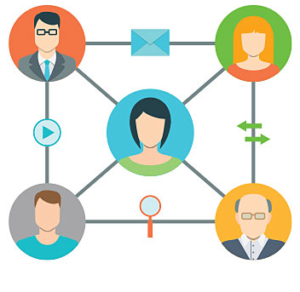 While governments can determine national Internet policies, which impact Internet operators and infrastructure providers that operate within their borders, their direct influence in the realm of Internet governance bodies has been limited. This is because most of these governance functions have been executed either by the technical communities that first developed the Internet’s networking technologies or the private sector, which has driven the spread of the Internet since its commercialization in the 1990s. 4 The major exception to this has been the US government, which initially funded the development of the Internet and played a major role in its governance up through the end of the 1990s when global, multistakeholder Internet governance began in earnest. The fact that governments are now just one set of actors in the functioning of Internet governance creates an excellent opportunity for civil society organizations to actively shape how the Internet develops going forward.
While governments can determine national Internet policies, which impact Internet operators and infrastructure providers that operate within their borders, their direct influence in the realm of Internet governance bodies has been limited. This is because most of these governance functions have been executed either by the technical communities that first developed the Internet’s networking technologies or the private sector, which has driven the spread of the Internet since its commercialization in the 1990s. 4 The major exception to this has been the US government, which initially funded the development of the Internet and played a major role in its governance up through the end of the 1990s when global, multistakeholder Internet governance began in earnest. The fact that governments are now just one set of actors in the functioning of Internet governance creates an excellent opportunity for civil society organizations to actively shape how the Internet develops going forward.
The Emergence of the Internet and its Distributed Governance Structures
Today’s Internet is the amalgamation of several digital networking initiatives and technologies that have been patched together over the years. Arguably, the most important of these precursors was ARPANET, a US Department of Defense funded computer network that was first launched in 1969. While ARPANET was funded by the military, it was maintained and expanded by academics who used it for collaborative research. The development in the 1970s of the Internet protocol suite (TCP/IP), a set of communications protocols that allowed computers using different operating systems to communicate, facilitated the connection of a growing number of independent research networks that had been created around the world. It is important to note that these new computer networks depended on previously existing telecommunications infrastructure as opposed to an entirely new technological platform. But ARPANET was not the only networking initiative. Usenet news groups and bulletin board systems (BBS) were other pre-cursor computer networking systems that were run by civil society and academics.
The development of Hypertext Markup Language (HTML), the software code used for creating visual webpages, HyperText Transfer Protocol (HTTP), and the first web browser and server in 1991 by Tim Berners-Lee at the CERN research lab in Europe, created an easy-to-use information ecosystem for sharing information via webpages. This led to the emergence of the World Wide Web. As the capabilities of the expanding network grew, so did the demand for access. In the early 1990’s the US government decided to privatize the infrastructure backbone on which the network relied and make it available to the public for commercial use. This privatization increased the role of the private sector in the Internet’s maintenance and governance.
The Four Layers of the Internet
For the purposes of understanding the current Internet governance structures it is best to conceptualize the Internet as four, distinct layers with different purposes and functions: social, content, logical, and physical. Policy discussions pertinent to media development permeate all four layers. And each layer has a distinct constellation of forces, actors, and bodies responsible for generating such policies. It is important to note that policy changes on one layer will have a direct impact on the others, in some form or fashion. So, while media development efforts involving the Internet have often focused on the content layer, where news and entertainment is shared, policy changes in the other layers will no doubt impact how the Internet functions, and thus the broader media environment.
We will discuss the different layers starting with the social layer.
It is important to conceptually distinguish these layers in order to comprehend why they are governed in different ways and how changes in one layer can impact the others.
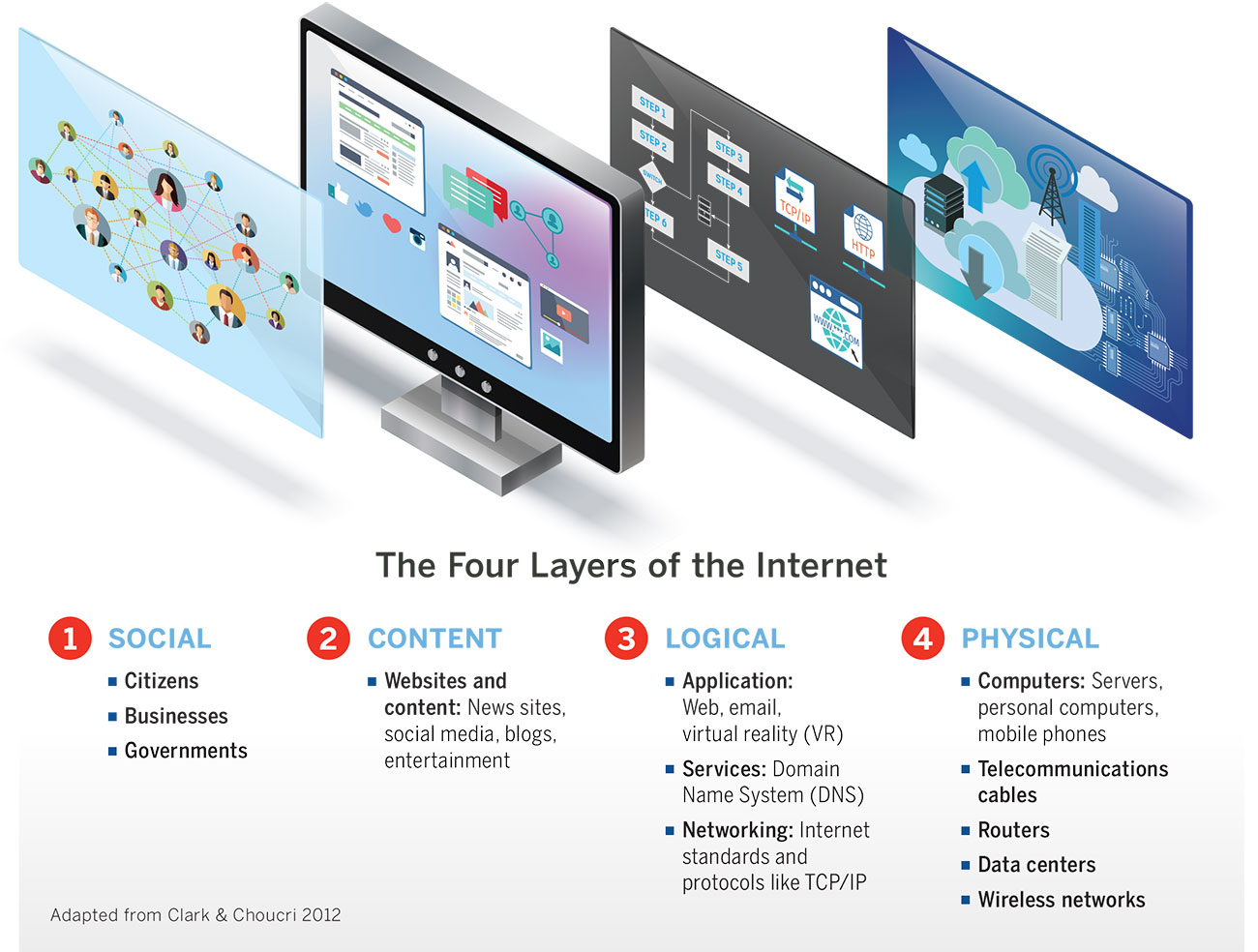 The Social Layer
The Social Layer
People build, code, regulate, and use the Internet. It is important not to lose sight of the fact that the Internet as a technological platform is ultimately created and used by people.
The Content Layer
The information layer is what most people think of when they hear the words Internet or World Wide Web. It is the layer that includes the information and content that people interact with on a daily basis. This includes websites, social media, blogs, news sites, video and audio platforms, and virtually all the content that is exchanged by users. It also includes some of the newest multimedia developments like the Internet of Things (IoT) and Virtual Reality (VR). This layer is also seen as the heart of the political and public debate on Internet governance. Many of the most well known issues, like the discussions about privacy, encryption, freedom of speech, human rights, and intellectual property, arise from the technology at this layer. Many of these discussions take place through traditional policy instruments like state regulation or private-public agreements. The Internet Governance Forum (IGF) was originally created to serve as a global forum for governments, private companies, and civil society to discuss these types of issues.
The Logical Layer
The logical layer makes the Internet tick. It is not a tangible thing, but rather a set of procedures that create the rules that ensure that all the processes necessary to make the Internet function actually work. It includes core Internet protocols like TCP/IP, developed at the Internet Engineering Task Force (IETF), Internet services like the Domain Name System (DNS) run by the Internet Corporation for Assigned Names and Numbers (ICANN), and hardware and Wi-Fi standards developed by the Institute of Electrical and Electronics Engineers (IEEE).
The Physical Layer
The physical layer of the Internet is the most tangible to people. It is the physical technology through which data packets travel. Examples are the undersea fiber optic cables, cellular towers, and data centers. Telecommunication companies privately own much of this infrastructure. The International Telecommunications Union (ITU) facilitates much of the coordination on the physical layer.
The complex, multi-layered nature of the Internet means that there is no one public or private body that oversees all aspects of the Internet. This guidebook focuses mostly on the organizations operating at the logical and physical layer, although their work always impacts the layers above it. The work of organizations at these layers of the Internet is often invisible to most Internet users, yet crucial for ensuring media developers can do their work. Some organizations like the International Telecommunication Union (ITU), the Internet Engineering Task Force (IETF) 5 and the Institute of Electrical and Electronics Engineers (IEEE) started long before the commercialization of the Internet in the 1990s. While others, like the Internet Corporation for Assigned Names and Numbers (ICANN) and the Internet Governance Forum (IGF), were created as a result of the increasing complexity of managing the Internet’s critical resources. These organizations provide civil society the ability to directly influence the Internet’s governance in a way that is unimaginable for any other large-scale communication medium.
The Multistakeholder Model of Internet Governance
The development of the Internet as a patchwork of computer networks using shared software protocols and which is largely operated by private entities has led to a unique multistakeholder governance model. It entails the participation of governments, the private sector, civil society, and anybody who cares to show up and do the work. This arrangement is markedly different from multilateral governance, which relies solely on the participation of representatives from governments.
The multistakeholder model sets the Internet apart from previous worldwide communications technologies, such as the telegraph and telephone, that were largely controlled and regulated by governments or government-controlled monopolies which owned the physical infrastructure. More importantly, multistakeholder governance now allows civil society actors to directly discuss and help determine the policies that shape the Internet on a global scale. Whereas in multilateral governance systems like the United Nations, civil society is relegated to lobbying governments to adopt positions, multistakeholder governance allows civil society a seat at the decision-making table.
While multistakeholder governance is still in its nascent stages, and there are legitimate concerns about whether power is being equally balanced among the various stakeholders, 6 there is no doubt that it presents an important new opportunity for the media development community to become more actively engaged in helping shape the future of the Internet, and by extension the future of our global media environment.
The following sections of this report outline the five most prominent IGBs and how their work is relevant to the media development community. Each section also explains the various opportunities for civil society actors to become more involved in the hopes that more people with a media development background will participate and advocate for policies that are beneficial to our global media environment.
New Domains and Freedom of Expression: The Internet Corporation for Assigned Names and Numbers (ICANN)
The Internet Corporation for Assigned Names and Numbers (ICANN) is a nonprofit 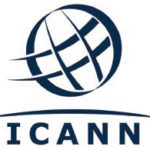 organization in charge of the management and technical maintenance of the databases related to the namespaces of the Internet. These databases of “names” and “numbers” are what allow the Internet to function as one global network. ICANN coordinates the process of tying a name to its corresponding IP address. For example, when you enter a URL into your browser, like www.article19.org, that is not actually the address. The Domain Name System (DNS) connects an IP address to the Uniform Resource Locator (URL). This is done because people are much better at remembering words than remembering an IP addresses like 85.118.235.222.
organization in charge of the management and technical maintenance of the databases related to the namespaces of the Internet. These databases of “names” and “numbers” are what allow the Internet to function as one global network. ICANN coordinates the process of tying a name to its corresponding IP address. For example, when you enter a URL into your browser, like www.article19.org, that is not actually the address. The Domain Name System (DNS) connects an IP address to the Uniform Resource Locator (URL). This is done because people are much better at remembering words than remembering an IP addresses like 85.118.235.222.
ICANN also sets the policies and coordinates the Domain Name Server (DNS). 7 A domain consists of two parts, the part before the dot and after the dot. The part after the dot is called the Top Level Domain (TLD). Examples of TLDs are .org, .net, and .com. Companies called registries are in charge of managing domains ending with a particular TLD. ICANN contracts these registries, and refers to these companies’ servers via its root servers. Individual domains are sold by registrars, which then register the domain with the appropriate registry. 8 Thus, DNS works like a hierarchical ‘phonebook of the Internet,’ with ICANN on top. 9
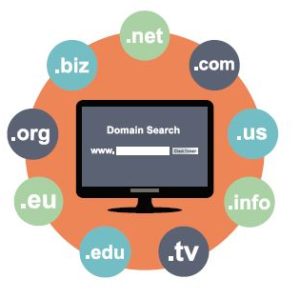 ICANN was incorporated in California in 1998 when the US government effectively privatized the management of these databases to this new, multistakeholder organization. The US Department of Commerce’s National Telecommunications and Information Administration (NTIA) 10 established ICANN as a not-for-profit corporation in the state of California to perform the Internet Assigned Numbers Authority (IANA) 11 functions, with continued NTIA oversight. Revelations about US National Security Surveillance (NSA) mass surveillance in 2013, which led international observers to question US government commitment to Internet freedom, restarted stalled efforts to end perfunctory NTIA oversight. On October 1, 2016, the NTIA relinquished its stewardship role over the IANA functions to the global multistakeholder community organized at ICANN.
ICANN was incorporated in California in 1998 when the US government effectively privatized the management of these databases to this new, multistakeholder organization. The US Department of Commerce’s National Telecommunications and Information Administration (NTIA) 10 established ICANN as a not-for-profit corporation in the state of California to perform the Internet Assigned Numbers Authority (IANA) 11 functions, with continued NTIA oversight. Revelations about US National Security Surveillance (NSA) mass surveillance in 2013, which led international observers to question US government commitment to Internet freedom, restarted stalled efforts to end perfunctory NTIA oversight. On October 1, 2016, the NTIA relinquished its stewardship role over the IANA functions to the global multistakeholder community organized at ICANN.
At present, ICANN is one of the few IGBs operating in a full multistakeholder fashion. This means that its policies are discussed and developed with a broad group of stakeholders, which include governments, civil society, the private sector, and academia in a bottom-up way. Thus, a wide range of participants including Internet service providers (ISPs), IP registries, technology companies, universities, and government regulatory agencies all participate in ICANN governance discussions. ICANN is highly relevant to media developers as it directly impacts freedom of expression online and access to information through the power ICANN has to set policies on IP addressing, allocation and management of Country Code Top Level Domains (ccTLD) like .uk, .us, .ir, etc., and Generic Top Level Domains (gTLD) like .com, .org, .media etc.
Why it Matters for Media Development
Generic Top Level Domains (gTLDs) and Freedom of Expression
As people increasingly turn to the Internet for news and information, it is important that media outlets can acquire web site domains (e.g., www.cnn.com) that reflect their brand and that are easily accessible to their audience. This is especially true as the number of websites grows and finding an appropriate, unused domain name is increasingly challenging. Currently, at ICANN there is an effort underway to dramatically increase the number of generic top-level domains (gTLDs) (e.g., .com, .edu, .org, .africa, .gay, .hotel, .example, .مثال). 12 The motivation for offering new gTLDs is rooted in the idea that it will promote competition in the domain name market, improve freedom of expression online, and generate income for ICANN, which is supported by licensing fees.
While increasing the number of gTLDs has undoubted upsides because it allows for more diversity, determining new top-level domain names is always controversial. ICANN has stated that it solely focuses on the technical administration of the Domain Name System (DNS) and coordination of the IP address system; however, it is simply impossible to ignore the broader public policy dimensions of this work. This includes the selection of which new gTLDs can be used and who should operate them. These decisions determine which types of groups can have access to new gTLDs, and by extension how they can express themselves online using these gTLDs.
For example, two of the new proposed gTLDs that have caused much debate are .gay and .islam. 13 types of top-level domains that are linked to specific communities or groups are particularly controversial. The question emerges as to whether the management of these gTLDs should be given to a commercial applicant (i.e., a domain registrar that sells website domains to any paying customer) or another entity with strong ties to the LGBT or Islamic communities. An entity associated with these communities would ensure that only “legitimate members” could buy a .gay or .islam domain name. A commercial bidder, on the other hand, would sell to anyone willing to pay. This could include a private news organization targeted to the gay community, for example, which would benefit from using such a top-level domain. However, a solely fee-driven distribution of domains could also lead to abuse, as it would allow for websites to be named www.somethingextremelyinflamatory.gay. Undoubtedly, determining how and by whom gTLDs should be administered is quite tricky and politically fraught.
Media organizations may also be negatively impacted by new gTLDs in another way. Imagine a situation in which an adversarial party buys up the name of a local newspaper or a radio station, and subsequently refuses to sell that domain to that media organization. This could be used to censor media outlets by preventing them from purchasing a domain. Or it could be used as a tactic to confuse citizens by creating a site that falsely gives the impression it is linked to the media organization.
This type of action happens on a regular basis and is also known as ‘cybersquatting’ — registering a domain name in order to prevent another party from using it. ICANN has been developing policies like the Uniform Domain Name Resolution Policy (UDRP) 14 to prevent such cybersquatting. These policies have decreased the occurrence of cybersquatting. But it’s not a panacea. As the number of new gTLDs continues to increase, this issue will again become more pertinent. And media developers should ensure that the focus remains on the negative impact of cybersquatting on freedom of expression.
At present, ICANN’s decisions tend to heavily follow US intellectual property laws regarding who has the right to a certain gTLD. Indeed, policies at ICANN have traditionally favored business interests. This often means that large, resource rich private sector entities are favored over small organizations, like locally run media outlets. In the past couple of years, the number of applicants for new gTLDs from the Global South has been minimal. The minimum cost to apply for a gTLD is US$185,000. This and a long application process that requires strong English skills have proven to be steep barriers to entry.
The addition of gTLDs in non-Latin scripts (e.g., شبكة, онлайн) in 2013 was a great step forward in fostering freedom of expression online. However, there is still a lot of work that needs to be done to enable a more diverse set of actors to apply for gTLDs and to ensure that they are distributed and managed in a way that is equitable. This is a role that the media development community is uniquely able to contribute to and which will have significant impacts on the media space for decades to come.
Additionally, there have been worrying instances of governments working together with US-based companies and ICANN in the domain name industry to implement national policies that negatively impact human rights. This happens in various ways. For example, China recently drafted legislation that would mandate that all Internet domain names in China must be registered through government-licensed service providers that have established a domestic presence in the country. This has a direct impact on the right to privacy and freedom of expression because it encourages the implementation of real name policies for domain name registration. ICANN and the IETF are some of the venues where the technology to facilitate this policy is being discussed. The media development community is uniquely positioned to call out the various actors involved in these types of developments and hold them accountable. 15
How to Engage
Participation at ICANN is open to anyone willing to volunteer their time. And while the barrier to entry in terms of understanding how ICANN works is high, the learning curve is fast and the rewards plenty. To ensure that newcomers join, ICANN has regular online tutorials 16 about its work. The Non-Commercial Users Constituency (NCUC), a group that represents non-commercial users and non-commercial uses on the Internet, is a great place to start for the media development community. Initially, when it was first organized in 1999, this group’s focus was on topics of transparency, accountability, privacy, and freedom of expression. Increasingly, it is also concentrating on efforts regarding human rights, and the responsibility of ICANN to respect them. The NCUC is one component of the larger Generic Names Supporting Organization (GNSO), which helps set gTLD policy.
Up until 2016 ICANN did not have any specific policy regarding human rights. This changed when a new section was added to ICANN’s bylaws, which outlines ICANN’s core value to respect internationally recognized human rights. This came about through the hard work of a group of advocates who pursued this agenda. This new language means that, in the future, before ICANN makes policy decisions it must first conduct an assessment of how that policy might impact human rights. Currently efforts at ICANN are focused on developing a Framework of Interpretation (FOI) for the text in the bylaws so that the policy can be implemented going forward.
Given that ICANN’s policies and procedures undeniably impact how people communicate and access information, the new bylaws on human rights may prove to be hugely beneficial to the media development community. Until now, it was difficult for civil society actors to successfully make the case that ICANN’s work even had an impact on human rights. The new bylaws will provide a tool for advocates to ensure that ICANN’s decisions strengthen global respect for human rights, including those rights that directly impact the media development community.
Media Plurality in the Age of Social Media: The Internet Governance Forum (IGF)
 The Internet Governance Forum (IGF) is an annual multistakeholder meeting convened by the UN where Internet governance and policy are debated by representatives from governments, the private sector, civil society, academia, and technical communities. The mandate of the IGF is broad 17 and includes facilitating dialogue between a wide set of stakeholders on issues ranging from key policy elements of Internet governance to the management of critical Internet resources, content regulation, human rights, the digital divide, and access to the Internet. The central idea behind the IGF is that it provides a forum for dialogue between diverse stakeholders. It creates a space for individuals to identify emerging issues, lobby, and negotiate. Yet, it is explicitly not a decision-making body. The IGF is an excellent forum both to discuss emergent topics, and to strategize engagement at other IGBs.
The Internet Governance Forum (IGF) is an annual multistakeholder meeting convened by the UN where Internet governance and policy are debated by representatives from governments, the private sector, civil society, academia, and technical communities. The mandate of the IGF is broad 17 and includes facilitating dialogue between a wide set of stakeholders on issues ranging from key policy elements of Internet governance to the management of critical Internet resources, content regulation, human rights, the digital divide, and access to the Internet. The central idea behind the IGF is that it provides a forum for dialogue between diverse stakeholders. It creates a space for individuals to identify emerging issues, lobby, and negotiate. Yet, it is explicitly not a decision-making body. The IGF is an excellent forum both to discuss emergent topics, and to strategize engagement at other IGBs.
The need for such a multistakeholder forum like the IGF was first identified during the World Summit on the Information Society (WSIS) in 2003. The actual establishment of the IGF was no simple feat. Many who participated in the WSIS process were skeptical about the idea of creating a multistakeholder forum. Some argued that the IGF would be nothing more than a UN talk-shop. Others said that the discussions on Internet governance should be left to those with most expertise: governments and the private sector. 18 Yet, those individuals arguing for a more inclusive forum to discuss a technology so integral to all aspects of daily life with a wide range of political, economic, and social implications, proved victorious and the annual IGF was enacted.
The IGF is guided by the Multistakeholder Advisory Group (MAG). This is a committee whose purpose is to advise the UN Secretary-General on the program and schedule of the IGF meetings. The MAG is comprised of 55 Members from governments, the private sector, and civil society, including representatives from the academic and technical communities. In addition, representatives of former IGF host countries, as well as representatives of intergovernmental organizations, are invited to attend and contribute to the meetings. The MAG holds face-to-face meetings, preceded by open consultations, up to three times a year. 19
Why It Matters for Media Development
Social Media as News Platforms: Algorithms and Media Plurality
Improving media plurality — the diversity of viewpoints available across media outlets in a given society — has long been a strategic goal of the media development community. Plurality is central to creating a healthy news ecosystem that includes multiple perspectives necessary to inform citizens. In the past, efforts to foster plurality focused on countering government information monopolies or ownership concentration in privately owned media, which both effectively limit the types of news and information being circulated. Now, the Internet enables people to find a vast array of news perspectives virtually instantaneously. However, this alone has not definitively translated into more diverse news consumption among citizens. In fact, the Internet as a system for circulating news is producing new challenges to media plurality.
One of these challenges is the increased use of algorithms in the curation of information online. Algorithms that sort news and provide personalized results to users provide a host of new difficulties for the media development community. For example, the customization of news feeds potentially undercuts attempts to create a cohesive public sphere in which many citizens share a common set of information. 20 This is especially true now that social media platforms and search engines have become the main portal for access to news and information online. We need to further understand the impact of algorithms on media plurality.
Most popular search engines and social media platforms operate using algorithms. These algorithms decide the content of and the order in which information is being served to Internet users. Yet, the precise calculations that go into how and which information is presented are opaque. These algorithms not only underpin what information is consumed, but also what information is likely to be produced. As media outlets increasingly focus on ensuring that their content is ‘liked’ and ‘shared,’ they produce content that is likely to get such online responses. This is to the detriment of news or information that does not have the same level of ‘shareability.’ 21 Algorithms have led to computer automated and personalized news dissemination. This is not bad of itself, but it is problematic when the way by which this happens is opaque and the fashion in which this happens diminishes media plurality.
Currently such discussions on algorithm accountability are happening in distinct pockets: regulators are discussing with industry, engineers in companies confer with management, media developers talk to the organizations they work with on the ground. But to address this issue holistically, these different actors need to be brought together in one venue.
The issues surrounding accountability and transparency of algorithms are slowly gaining traction at the IGF, and they are important topics that the media development community can bring to the fore. Algorithms are of great interest to both governments and the private sector. The latter is particularly sensitive to maintaining their public reputation and trust in their products. Likewise, governments have a public interest in ensuring that the citizenry is well informed and has access to a plurality of media outlets. The IGF, in particular the Dynamic Coalition on Platform Responsibility, is thus a perfect venue to begin thinking about creative solutions that address this problem.
Making the Multistakeholder Model Work: Increasing Representation from the Global South
In recent years, the IGF has seen an unequal representation of stakeholders: the statistics of the proposals received for the 2016 IGF indicate that representatives from the Global South are significantly underrepresented. Furthermore, civil society is overrepresented, whereas other crucial actors like governments, the private sector, and law enforcement agencies are less inclined to participate. The multistakeholder model is difficult to successfully achieve when the representation of the different stakeholders is skewed. In practice, having such an unequal balance in participation has also proven to lead to the siloing of discussion topics. The media development community has experience developing capacity in countries with limited resources and should advocate for increasing participation from all stakeholder groups from these countries.
How to Engage
The IGF is an open forum, meaning that anyone can join. 22 The yearly IGF provides excellent opportunities for engaging in dialogue with a diverse set of stakeholders. Organizations can submit and organize open discussions, capacity building sessions, and other types of workshops.
Engagement at IGF often takes the form of participation in what are called Dynamic Coalitions. These are informal, issue specific groups where different stakeholders get together to discuss issues on equal footing. There are currently sixteen active Dynamic Coalitions, in a broad set of topics. 23 These Coalitions are an effective vehicle for participating in the IGF as they are narrowly focused and bring together stakeholders around specific issues. Most relevant to the media development community are the following four coalitions:
•Community Connectivity: This Dynamic Coalition focuses on how community networks can be used to improve connectivity and access to information for low-access areas.
•Freedom of Expression and Freedom of the Media on the Internet: This Dynamic Coalition examines issues that relate to freedom of speech and freedom of the press online.
•Innovative Approaches to Connecting the Unconnected: This Dynamic Coalition looks at novel ways to increase Internet penetration and adoption, as well as developing and deploying new technologies to bridge the digital divide.
•Platform Responsibility: This Dynamic Coalition focuses on ensuring the regulation of online platforms is done from a human rights perspective that includes a specific focus on the importance of freedom of expression.
Making the Multistakeholder Model Work: Increasing Representation from the Global South
In recent years, the IGF has seen an unequal representation of stakeholders: the statistics of the proposals received for the 2016 IGF indicate that representatives from the Global South are significantly underrepresented. Furthermore, civil society is overrepresented, whereas other crucial actors like governments, the private sector, and law enforcement agencies are less inclined to participate. The multistakeholder model is difficult to successfully achieve when the representation of the different stakeholders is skewed. In practice, having such an unequal balance in participation has also proven to lead to the siloing of discussion topics. The media development community has experience developing capacity in countries with limited resources and should advocate for increasing participation from all stakeholder groups from these countries.
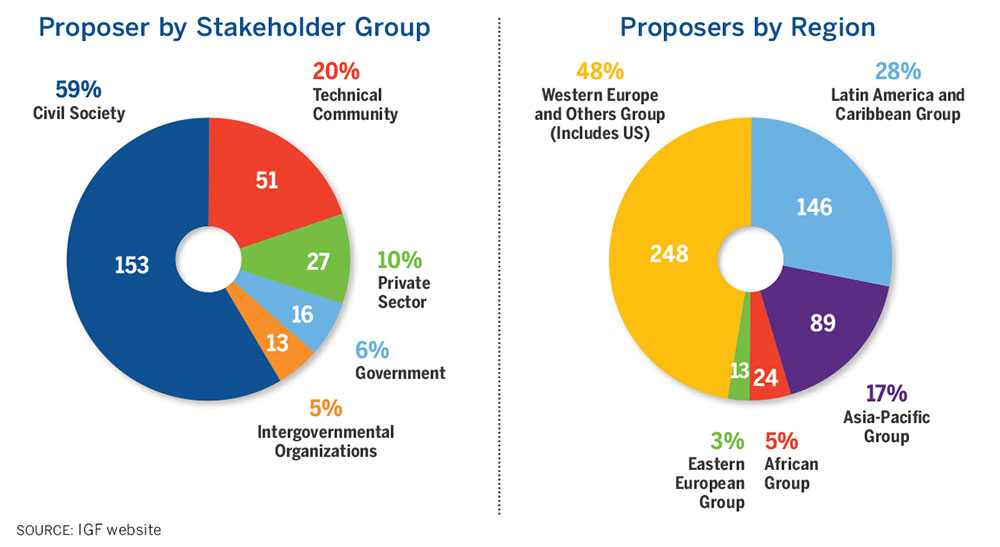
Media Up in the Air: The International Telecommunication Union (ITU)
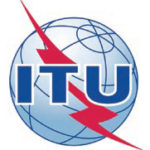 The ITU plays a crucial role in developing the standards and infrastructure that guide access to cellular networks and radio spectrum, especially in the Global South. It was originally founded in 1865, as the International Telegraph Union. Its objective was to standardize protocols for telegraphs and other precursors to modern long distance telephony. In 1934, it changed its name to the International Telecommunication Union to highlight its broader focus on telecommunications, and in 1947 it was brought under the auspices of the newly formed United Nations. It is responsible for coordinating the use of radio spectrum, promoting international cooperation in terms of satellite orbits, and setting a host of technical standards related to telecommunications.
The ITU plays a crucial role in developing the standards and infrastructure that guide access to cellular networks and radio spectrum, especially in the Global South. It was originally founded in 1865, as the International Telegraph Union. Its objective was to standardize protocols for telegraphs and other precursors to modern long distance telephony. In 1934, it changed its name to the International Telecommunication Union to highlight its broader focus on telecommunications, and in 1947 it was brought under the auspices of the newly formed United Nations. It is responsible for coordinating the use of radio spectrum, promoting international cooperation in terms of satellite orbits, and setting a host of technical standards related to telecommunications.
The ITU’s mandate includes transnational telecommunication and ICT issues. Its mandate is divided across three sectors: Radiocommunication (ITU-R), Development (ITU-D), and Standardization (ITU-T). Each sector works through a series of study groups in which this work takes place. 24
Since the ITU is a UN body, only UN member states have voting rights. However, just like the global telecommunications infrastructure, the ITU is fundamentally a public-private partnership. In addition to the 193 member countries, there are over 750 representatives from private sector entities along with representatives from various academic institutions and civil society organizations who also participate in proceedings. This non-governmental presence means that civil society organizations have a voice, even though they are not allowed to vote. Civil society can participate either as participants in their respective national delegations, or as sector members. Sector members are the non-Member State, non-voting members at the ITU that have a stake in the issues discussed there, such as private corporations or advocacy organizations.
The technical work done by the ITU in terms of setting standards has increasingly become the vehicle for repressive regimes to limit Internet freedom in their jurisdictions. This is done by influencing the standards making process of the next generation of technology like the Internet of Things. 25 The proposals of authoritarian regimes include embedding these new technologies with features that make it very easy for governments to track and surveil Internet users. 26 This would mean repressive governments would have more options to control and limit Internet access within their jurisdiction. This would greatly hinder the work of journalists, local bloggers, community news platforms, and the media developers supporting them.
Private companies have a significant influence at the ITU. The private-public nature of the ITU has meant that the influence of large commercial technical players, like telecommunication companies, to grow exponentially. These commercial entities often have more financial and time resources to engage in the ITU policy procedures than civil society. This creates a situation in which their influence is disproportionate to that of other non-governmental sector members. Often the goals and aims of these business actors does not square with civil society aims, and there is a real need for increased civil society to provide a commensurate counterweight to commercial influence.
Why it Matters for Media Development
Wireless Connectivity (5G and Unlicensed Spectrum) and Access to Information
Increasingly, people around the world are connecting to the Internet wirelessly, either by accessing a cellular network or via Wi-Fi. This is especially true in developing countries where vast landline infrastructure has never been built. 27 Yet, while the increased use of wireless Internet connections potentially facilitates Internet access worldwide, how it is implemented will greatly impact the broader media ecosystem. Indeed, the debate about the technical makeup of these new generations of technology is the new frontier for authoritarian governments to inject technology to suit their domestic agenda of repression and censorship.
Another important issue at the ITU is the development of 5G. This next generation of cellular wireless Internet connectivity, dubbed 5G, will be much faster than the previous generations (2G, 3G, 4G). It will function on a different frequency than past cellular networks, taking mobile data speeds to a new level, and reducing the costs by increasing the network’s efficiency. Because of the speed and bandwidth potential of 5G, it is likely that it will replace wired connections in urban areas worldwide. This would have several positive impacts, such as making connection easier and faster on portable devices and increasing access to broadband speeds. The implementation of 5G would also mean that telecommunications companies (i.e., the companies that provide cellular service) would gain market share as landline Internet Service Providers (ISPs) would not be able to compete in terms of price and speed. In essence, cellular service could become the primary way that individual users connect to the Internet in the future, which is why these companies are heavily involved in lobbying on these issues at the ITU.
So much control over Internet access in the hands of telecommunications companies may be detrimental to media freedom. This is particularly true in countries where the telecommunications sector is dominated by just a few companies or government-controlled monopolies. This could potentially create one entity that can monitor and control the flow of virtually all information on the Internet in a given country. And, as telecommunications companies increasingly venture into content production, it is not hard to envision how this might limit the type of information individuals can access on their Internet-connected devices.
One further point of contention at the ITU concerns unlicensed spectrum. The creation of unlicensed spectrum — portions of the spectrum that do not require a government license to use — are one way to empower individuals to have more control over their computer networking and information sharing. 28 Currently the most well-known band of unlicensed spectrum is Wi-Fi, a standard that allows devices to connect to wireless local area networks (WLAN) of computers. Unlike access to cellular bandwidths, users do not need permission to use those portions of the spectrum. While in many cases Wi-Fi networks are themselves connected to the larger Internet, they do not always need to be. In extremely closed societies these networks can be used as alternative pathways for sharing news and information that is not easily subject to government censorship.
The popularity of Wi-Fi demonstrates a need for unlicensed spectrum, especially at a time of growing concentration in the telecommunications sector. At the same time, telecommunications companies are lobbying for standards that may actually reduce the future availability of unlicensed spectrum. Thus, the media development community should advocate for policies that balance the need for technologies that increase access to broadband, but also preserve local autonomy and enable free access to information.
How to Engage
The ITU is one of the most difficult IGBs in terms of civil society engagement because it was started as a multilateral institution. However, more recently the ITU has been more open to civil society engagement. There are a couple of ways that individuals and organizations from the media development community can take an active role in ITU discussions.
•Join as contributing member, either by joining a national delegation or by becoming a sector member.
•Identify civil society actors that are ITU members, and work with them to set a collective agenda.
•Identify academic institutions that are ITU members, have similar objectives and work with them.
•Participate in the ITU plenipotentiary.
Putting Privacy into Practice: The Internet Engineering Task Force (IETF)
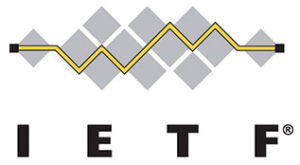 The IETF creates protocols and standards — the basic traffic rules of the Internet which define how information travels across the network, and who can connect to whom and to what content. It does not create standards for hardware, which falls to the International Telecommunications Union (ITU) and the Institute of Electrical and Electronics Engineers (IEEE). Nor does it work on protocols for the application layer of the Internet, like HTML, which is done by the World Wide Web Consortium (W3C). The work of IETF covers the protocols in between these layers, from the Internet Protocol (IP) to applications like email. 29 Internet standards and protocols are central to any discussion about how to enable healthy media ecosystems, both online and offline. 30 As such, the work the IETF does is highly relevant to media developers. Yet, they have been hesitant to engage with the IETF as much of the work requires a high level of technical knowledge.
The IETF creates protocols and standards — the basic traffic rules of the Internet which define how information travels across the network, and who can connect to whom and to what content. It does not create standards for hardware, which falls to the International Telecommunications Union (ITU) and the Institute of Electrical and Electronics Engineers (IEEE). Nor does it work on protocols for the application layer of the Internet, like HTML, which is done by the World Wide Web Consortium (W3C). The work of IETF covers the protocols in between these layers, from the Internet Protocol (IP) to applications like email. 29 Internet standards and protocols are central to any discussion about how to enable healthy media ecosystems, both online and offline. 30 As such, the work the IETF does is highly relevant to media developers. Yet, they have been hesitant to engage with the IETF as much of the work requires a high level of technical knowledge.
The first IETF meeting took place in 1986, and was attended by 21 American researchers. Since then attendance has grown to more than 1,000 participants at every meeting. The IETF, as many other important Internet bodies, came into being through support of the US government. However, since 1993 it has operated as an independent body under the guidance of the Internet Society (ISOC), a non-profit based in the US that provides leadership on Internet-related standards.
The IETF is probably the most informal Internet Governance Bodies (IGBs). Like ICANN and the IGF anyone can participate. 31 However, unlike those bodies there is no formal registration, membership fee, or even formal attire. 32 The IETF describes itself as a ‘self-organized group of people who contribute to the engineering and evolution of Internet technologies. It is the principal body engaged in the development of new Internet standard specifications.’ 33 The IETF community consists mostly of network designers, operators, vendors, and researchers. Its work takes place mostly over mailing lists, but also during three yearly meetings.
Although the IETF makes a point of saying that everyone participates as an individual, in practice most engineers are sent to the IETF by their company to create particular technologies, or to add to their development. Recently civil society and government actors have become more actively involved in the IETF’s work.
Why it Matters for Media Development
Web Browsing Privacy and the Importance of Encryption
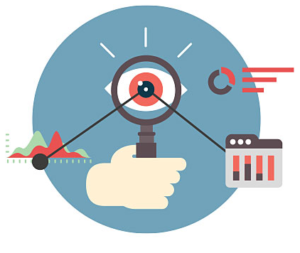 Ensuring that individuals and media organizations can maintain their privacy while accessing the Internet is essential to fostering a healthy media ecosystem. This guarantees that citizens are not fearful of accessing news that might not be approved by the government and that journalists can communicate with sources in ways that maintain their privacy. Indeed, surveillance, either by governments or corporations, can have a chilling impact on freedom of expression and freedom of the press. The IETF has long been working on security, which is an essential part of the trust necessary to ensure that people use the Internet.
Ensuring that individuals and media organizations can maintain their privacy while accessing the Internet is essential to fostering a healthy media ecosystem. This guarantees that citizens are not fearful of accessing news that might not be approved by the government and that journalists can communicate with sources in ways that maintain their privacy. Indeed, surveillance, either by governments or corporations, can have a chilling impact on freedom of expression and freedom of the press. The IETF has long been working on security, which is an essential part of the trust necessary to ensure that people use the Internet.
Encryption is an important part of security. It essentially ensures that communication between two parties is secured from outside attacks. Most people are familiar with encrypted emailing or messaging, especially those working with media professionals in countries with repressive governments or whistleblowers. But encryption is much more than just that. The IETF works on encrypting different parts of the Internet, including the hypertext transfer protocol (HTTP). HTTP is the protocol that actually defines the way we communicate with a website. IETF has developed an addition to the HTTP protocol called ‘HTTP over TLS,’ which is colloquially known as the Hypertext Transfer Protocol Secure (HTTPS). It ensures that any information you query or fill out on a website is encrypted and cannot be seen by third parties. Until recently the information queried on a website was not encrypted. This meant, for example, that if you were in China and typed in a search engine “How can I take circumvent the Great Firewall?,” 34 anybody snooping on the network would be able to see you posing that question. People connected to the same Wi-Fi, your Internet Service Provider (ISP), and the ISP of the website owner could all see, and even change the data you exchange with a website, without your knowledge. Now, the use of HTTPS provides people a way to interact with Internet domains in much more secure ways.
Currently, IETF is working on making the Internet’s infrastructure safer through the development of “TLS for DNS.” This protocol would provide the Domain Name Systems (DNS) with privacy protections by running the DNS protocol over the Transport Layer Secure (TLS) protocol, encrypting the traffic that runs over it. Currently, anyone can use the DNS protocol to see what websites you visited. This information can be used by governments or hackers for surveillance or to limit access to certain content. Ensuring the DNS has strong encryption is a basic necessity for anyone wanting their browsing history to remain anonymous, and an absolute must for those individuals whose lives might be in danger if that information falls in the wrong hands. Privacy online is currently under attack from governments around the world. The media development community should engage in these debates at IETF on encryption, anonymization, and privacy to ensure the voices of those most in need of these privacy preserving technologies are heard.
How to Engage
The IETF can be a confusing place considering its specific jargon, procedures, technical know-how, and unique culture. Yet at the same time, due to the substantial influence its work has on the shape and ability of the Internet to enable certain features like human rights, privacy, security and access, it is crucial that more media developers get involved. This is necessary to ensure that global Internet access becomes a reality, and that Internet technology is developed considering the security and privacy of the most vulnerable or threatened users.
The IETF is in the process of creating an Education, Mentoring and Outreach Directorate to encourage a more diverse participant base. Given the skewed gender balance at IETF, the women participating have a separate “Systers” mailing list, 35 and they also gather for lunch every meeting to provide mentoring.
Opportunities to become involved:
Join a research group as an individual participant, and get involved in the work of the group on the mailing list or even attend an IETF meeting (either remote or in person).
Take part in the mentoring program of the IETF, which runs every meeting. 36
Organize a “Birds of a Feather” (BoF) 37 meeting. These are informal meetings that allow a group of likeminded individuals to get together to discuss if there is a need for setting up a formal working group on a particular issue.
Suggest a topic for the IETF hackathons. 38 These take place the weekend before the IETF meetings and are always focused on solving a real-life problem.
If you self-identify as a woman, join the “Syster” mailing list and meetings aimed at improving the gender balance of participation at the IETF.
Status Code 451: An Internet Governance Standard to Expose Censorship
 Practically every Internet user has run into the “404 Not Found” status code on their web browser when trying, and failing, to access a particular website. This code indicates that the server is unable to locate thewebsite’s URL, and that perhapsthe website no longer exists. Thesimilar “403 Forbidden” statuscode indicates that while theserver is able to locate thesite, the user does not havesufficient permission to accessit. While these codes can oftencause frustration, they serve amuch-needed role of informingweb users why they are unable toaccess content.
Practically every Internet user has run into the “404 Not Found” status code on their web browser when trying, and failing, to access a particular website. This code indicates that the server is unable to locate thewebsite’s URL, and that perhapsthe website no longer exists. Thesimilar “403 Forbidden” statuscode indicates that while theserver is able to locate thesite, the user does not havesufficient permission to accessit. While these codes can oftencause frustration, they serve amuch-needed role of informingweb users why they are unable toaccess content.
As censorship on the Internet became more commonplace, a number of people realized that there was a need for a new status that indicates when something is not available for “legal reasons,” such as when a web page has been censored by a government. In 2013 the Canadian software developer Tim Bray working for Google submitted a formal proposal for the creation of such an error code. In response an IETF workinggroup created the “451 Unavailable for Legal Reasons” status code,and it was officially published as a global standard in February 2016. The number ‘451’ is a reference to Ray Bradbury’s dystopian novel Fahrenheit 451, in which books are outlawed. Status code 451 createsgreater transparency in circumstances where legal issues affect the availabilityof content. While this does not necessarily address all forms of Internet censorship, it does demonstrate how policies enacted by IGBs can improve transparency and censorship measurements online.
Secure Access and Trust: The Institute of Electrical and Electronics Engineers (IEEE)
 The IEEE is an organization that develops many of the international standards that drive modern telecommunication and ICT hardware. Most relevant for media development, are the standards the IEEE develops for networks, like Ethernet, Bluetooth and Wi-Fi. These standards allow devices to connect to the Internet, enabling wireless networking. It is also one of the main bodies responsible for developing standards for robotics, smart cities, artificial intelligence, and automated systems. All of these different technologies are in development currently, and will shape what our ‘connected future’ will look like.
The IEEE is an organization that develops many of the international standards that drive modern telecommunication and ICT hardware. Most relevant for media development, are the standards the IEEE develops for networks, like Ethernet, Bluetooth and Wi-Fi. These standards allow devices to connect to the Internet, enabling wireless networking. It is also one of the main bodies responsible for developing standards for robotics, smart cities, artificial intelligence, and automated systems. All of these different technologies are in development currently, and will shape what our ‘connected future’ will look like.
The IEEE works together with the International Organization for Standardization (ISO), 39 which develops the official and enforceable standards for a wide array of sectors (including healthcare, food safety, agriculture, and technology). The parts in IEEE standards that reference ISO standards are mandatory. 40 Unlike IETF standards, 41 IEEE standards are not free. Use of the standard often comes at a substantial fee.
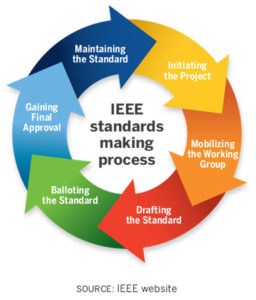 The IEEE was officially founded in 1965 and is currently the largest association of technical professionals. It has over 400,000 members from over 160 countries worldwide. The organizational structure of the IEEE is complicated, but it essentially breaks down to the following components: it has a regional and a technical column, each containing various units that are based on a shared technical interest or a technical focus. Anyone can join a working group of their interest and contribute to building a standard.
The IEEE was officially founded in 1965 and is currently the largest association of technical professionals. It has over 400,000 members from over 160 countries worldwide. The organizational structure of the IEEE is complicated, but it essentially breaks down to the following components: it has a regional and a technical column, each containing various units that are based on a shared technical interest or a technical focus. Anyone can join a working group of their interest and contribute to building a standard.
Why It Matters for Media Development
Wi-Fi Security
The IEEE group that develops local area networking (LAN) and metropolitan area networking (MAN) protocols, which include Wi-Fi, is one of the oldest and longest standing working groups. 42 Yet, Wi-Fi is still notoriously insecure. Public Wi-Fi hotspots present a trove of information for eavesdroppers interested in capturing information traveling over the network. Trust in the network, and knowing that it will provide a secure connection to information while minimizing personal data leakage is crucial to ensure media freedom.
Right now, a lot of people associate or access the Internet through public Wi-Fi points. This happens through a method called ‘shared encryption’ or ‘symmetric encryption.’ The danger in this method is that is possible for a person to create a fake Wi-Fi network, to which you automatically connect. There are however safer, more reliable options that also preserve your anonymity while connecting to Wi-Fi access points. Even though public Wi-Fi is becoming increasingly important for access to news and information online, currently very few people are working on this specific issue at the IEEE.
Many of the examples explaining the dangers of using unsecure public Wi-Fi connections approach the problem from a Western perspective, by giving examples of the dangers of using the public Wi-Fi in a mall or a trendy shared working space. However, a more relevant example would be the use of such insecure connections by activists who have no other options available but public Wi-Fi networks. The future development of Wi-Fi could benefit greatly from more focus on the issues of security and privacy from that point of view. Media developers are uniquely situated to bring this perspective to the conversation.
How to Engage
IEEE is an organization with a highly distributed structure, which means it is open to suggestions for new technologies, and the establishment of chapters or working groups. This is good for the media development community because it enables to operate locally, having direct access to the stakeholders in the region. While also being able to gain access to the larger IEEE community and its rich body of knowledge on network protocols.
Strategies
Join a Local Section, Chapter, Student Branch, or Affinity group.
Join an existing technical standards group at the IEEE.
Join the Global Initiative for Ethical Considerations in the Design of Autonomous Systems.
Join one of the three working groups at the Global Initiative for Ethical Considerations in the Design of Autonomous Systems.
Conclusion
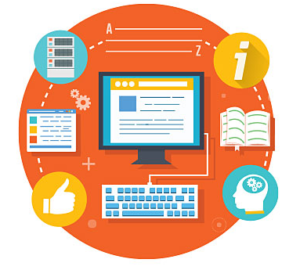 The Internet was not initially conceived of as a news distribution platform, but now because of the digital convergence it serves as a central conduit for all types of media. Thus, decisions made on the global level at Internet governance bodies will undoubtedly impact the national media ecosystems where media development efforts are focused. These decisions will influence not only the type of information people can access, but also how journalists can gather and verify information, engage with and protect sources, and build communities of journalistic expertise. Thus, participating in Internet governance is crucial to creating a positive enabling environment for media development.
The Internet was not initially conceived of as a news distribution platform, but now because of the digital convergence it serves as a central conduit for all types of media. Thus, decisions made on the global level at Internet governance bodies will undoubtedly impact the national media ecosystems where media development efforts are focused. These decisions will influence not only the type of information people can access, but also how journalists can gather and verify information, engage with and protect sources, and build communities of journalistic expertise. Thus, participating in Internet governance is crucial to creating a positive enabling environment for media development.
The complex web of Internet governance bodies can be perplexing for an average media specialist. Likewise, the rapid pace of technological change can also make it difficult to stay abreast of emerging issues that have a direct impact on the media environment. Yet, these changes also create new opportunities to reengage the broader community concerned with media development, as well as to cultivate new allies interested in promoting sustainable and pluralistic media systems that serve the public interest. Thus, in the long run engaging in Internet governance discussions will prove to be a wise investment.
The community of media development proponents should also take note of the unique multistakeholder processes being developed for Internet governance. The multistakeholder model is innovative in the way that it attempts to incorporate input from various sectors to develop practical policies with broad-based support. Indeed, research has shown that media reform is most successful when it is supported by a wide array of political actors. 43 Moreover, the multistakeholder governance model gives civil society actors a seat at the policymaking table. This means that organizations working on media development can directly shape the standards, protocols, and other Internet technologies such that they foster the growth of independent media.
Internet governance decisions are having a more pronounced and immediate impact on the media environment. The question then for the media development community is not whether to get involved in Internet governance, but when and how. Engagement at ICANN, IGF, ITU, IETF, and IEEE provides an opportunity to substantively advocate for policies and technologies that ensure the Internet remains an open, accessible, and secure medium for freedom of expression and access to information.
Footnotes
- Brand, Stewart. The Media Lab: Inventing the Future at MIT, Viking Penguin, Inc. 1987.
- Bolter, Jay David and Richard Grusin, Remediation: Understanding New Media,
Cambridge: MIT Press, 1999. - MacKinnon, Rebecca, Consent of the Networked: The World-wide Struggle for Internet Freedom, Basic Books, 2013.
- DeNardis, Laura, The Global War for Internet Governance, 11. Yale University Press, 2014.
- The first IETF meeting was held in 1986, it was officially established as an independent international activity under the Internet Society in 1993.
- Hofmann, Jeanette, “Multi-stakeholderism in Internet Governance: Putting a Fiction into Practice,” Journal of Cyber Policy 1, no. 1 (January 2, 2016): 29–49, doi:10.1080/237388 71.2016.1158303.
- DNSimple. “How DNS works.” Accessed January 24, 2017. https://howdns.works/
- Google. “Vint Cerf explains…Who runs the Internet’s address book?” Last modified July 23, 2014. https://www.youtube.com/watchv=vd3dH90tdhk&utm_content=buffer9daea&utm_medium=social&utm_source=twitter.com&utm_campaign=buffer
- “We the networks.” The Economist, March 5, 2016. Accessed January 24, 2017. http://www. economist.com/news/international/21693922organisation-runs-Internet-address-bookabout-declare-independence-we
- National Telecommunications and Information Administration (NTIA). “About.” Accessed January 24, 2017. https://www.ntia.doc.gov/about
- IANA. “The global coordination of the DNS Root, IP addressing, and other Internet protocol resources is performed as the Internet Assigned Numbers Authority (IANA) functions.” Accessed January 25, 2017. https://www.iana.org/
- It is important to understand that buying the domain name http://www.ned.org is a much simpler process than trying to acquire the gTLD .ned. The first involves simply payingan accredited registrar for the name, while the latter means becoming an Internet infrastructure operator that runs a crucial of Internet infrastructure.
- Van Gelder, Stephane. “Islamic TLDs and the Challenge of Good Governance.” CircleID, January 20, 2014. Accessed January 25, 2017. http://www.circleid.com/posts/20140120_islamic_tlds_and_the_challenge_of_good_ governance/
- ICANN. “Uniform Domain-Name DisputeResolution Policy” Accessed February 6, 2017. https://www.icann.org/resources/pages/help/ dndr/udrp-en
- Article 19. “Corporate actors must not facilitate human rights violations through new Chinese rules,” Last Modified December 2, 2016. Accessed February 6, 2017. https:// www.article19.org/resources.php/ resource/38577/en/corporate-actors-mustnot-facilitate-human-rights-violations-throughnew-chinese-rules
- ICANN. “How it Works at ICANN54: A Tutorial Series on the Nuts and Bolts of the Internet for Non-Techies,” Last modified October 12, 2015. Accessed February 6, 2017. https://www. icann.org/news/blog/how-it-works-at-icann54a-tutorial-series-on-the-nuts-and-bolts-of-theinternet-for-non-techies
- The proposal for the creation of an IGF was first put forward by the newly created UN multistakeholder Working Group on Internet Governance (WGIG), after the first World Summit on the Information Society (WSIS) meeting in Tunis, Tunisia in 2003. https://www. itu.int/net/wsis/docs2/tunis/off/6rev1.html
- Ibid
- Internet Governance Forum. “About the MAG.” Accessed January 25, 2017. http://www.intgovforum.org/cms/magabout
- Moeller, Judith et al., Shrinking Core? Exploring the Differential Agenda Setting Power of Traditional and Personalized News Media, Info 18, no. 6 (September 12, 2016): 26–41.
- Hermida, Alfred “Social Media and the News,” in Handbook of Digital Journalism, ed. Tamara Witschge, C. W. Anderson, and David Domingo (SAGE, 2016), 81–92.
- Granted: there is the minor issue of having the funds to fly to whatever far-off destination they have the event at, pay to stay there and pay the entry fee. Remote participation facilities have however been improving over the past years.
- Internet Governance Forum. “Dynamic Coalitions.” Accessed January 25, 2017. http:// www.intgovforum.org/cms/dynamiccoalitions
- For a complete list of the 20 study groups within the ITU-T during the most recent study period, please see: http://www.itu.int/en/ITU-T/ studygroups/2013-2016/Pages/default.aspx
- Dunkels, Adam. “Internet of Things: Thingsquare” BBC. Accessed January 25, 2017. http://www.bbc.co.uk/programmes/p01hvqt6
- Dourado, Eli. “How Russia and the UN are actually planning to take over the Internet” The Hill, September 12, 2016. Accessed January 25, 2 0 1 7. http://thehill.com/blogs/congress-blog/ technology/295320-how-russia-and-the-unare-actually-planning-to-take-over-the
- Pew Research Center. “Internet Seen as Positive Influence on Education but Negative on Morality in Emerging and Developing Nations,” March 19, 2015. Accessed January 252 0 1 7. http://www.pewglobal.org/2015/03/19/1communications-technology-in-emerging-anddeveloping-nations/
- Foditsch, Nathalia, “Power in the Airwaves. The role of spectrum management in media development.” Center for International Media Assistance (CIMA). Forthcoming.
- IETF. “Getting Started in the IETF.” Accessed January 25, 2017. https://ietf.org/newcomers. html
- Cath, Corinne and Luciano Floridi, “The Design of the Internet’s Architecture by the Internet Engineering Task Force (IETF) and Human Rights,” Science and Engineering Ethics, June 2, 2016, doi:10.1007/s11948-016-9793-y.
- That is, if you can pay the conference fee, the flight to get to the location and the costs of staying there.
- In addition to seeing the evolution of Internet standards and protocols the IETF is also an excellent place to see the evolution of the “Hawaii” shirt, its members sporting different varieties covering the early sixties to now. Same holds for tie-dye shirts.
- IETF. “About the IETF.” Accessed January 25, 2 0 1 7. https://ietf.org/about/
- The Great Firewall is the Chinese government’s tool to censor and block access to the open Internet.
- IETF. “systers Info Page.” Accessed January 25, 2 0 1 7. https://www.ietf.org/mailman/listinfo/ systers
- IETF. “IETF Mentoring Program.” Accessed January 25, 2017. https://www.ietf.org/ resources/mentoring-program.html
- A BoF can also be held in a bar, in which case it is referred to as a beer BoF. Accessed January 25, 2017. https://trac.tools.ietf.org/ bof/trac/
- IETF. “IETF Hackathon.” Accessed January 25, 2 0 1 7. https://www.ietf.org/hackathon/
- ISO. “Home” Accessed January 25, 2017. http:// www.iso.org/iso/home.html
- IEEE Standards Association. “Global Engagement” https://standards.ieee.org/ develop/intl/iso.html
- IETF. “Working with the IEEE 802.” Accessed January 25, 2017. https://www.ietf.org/ blog/2016/09/working-with-the-ieee/
- IEEE 802. “IEEE 802 LAN/MAN Standards Committee” Accessed January 25, 2017. http:// www.ieee802.org/
- Rothman, Paul, “The Politics of Media Development: The Importance of Engaging Government and Civil Society.” The Center for International Media Development (CIMA). September 2015.

